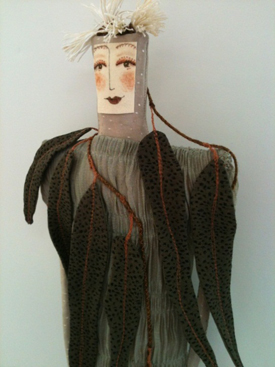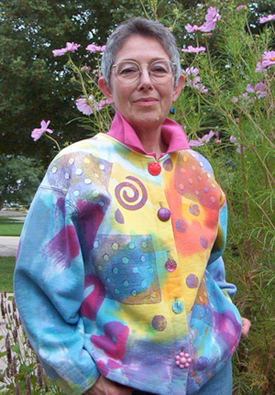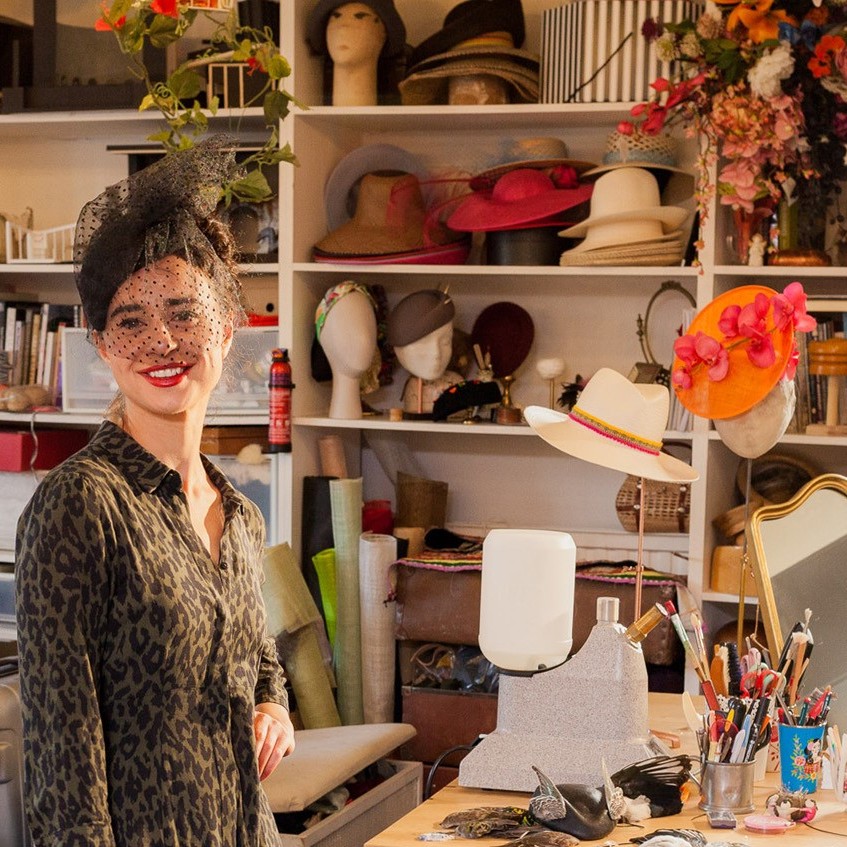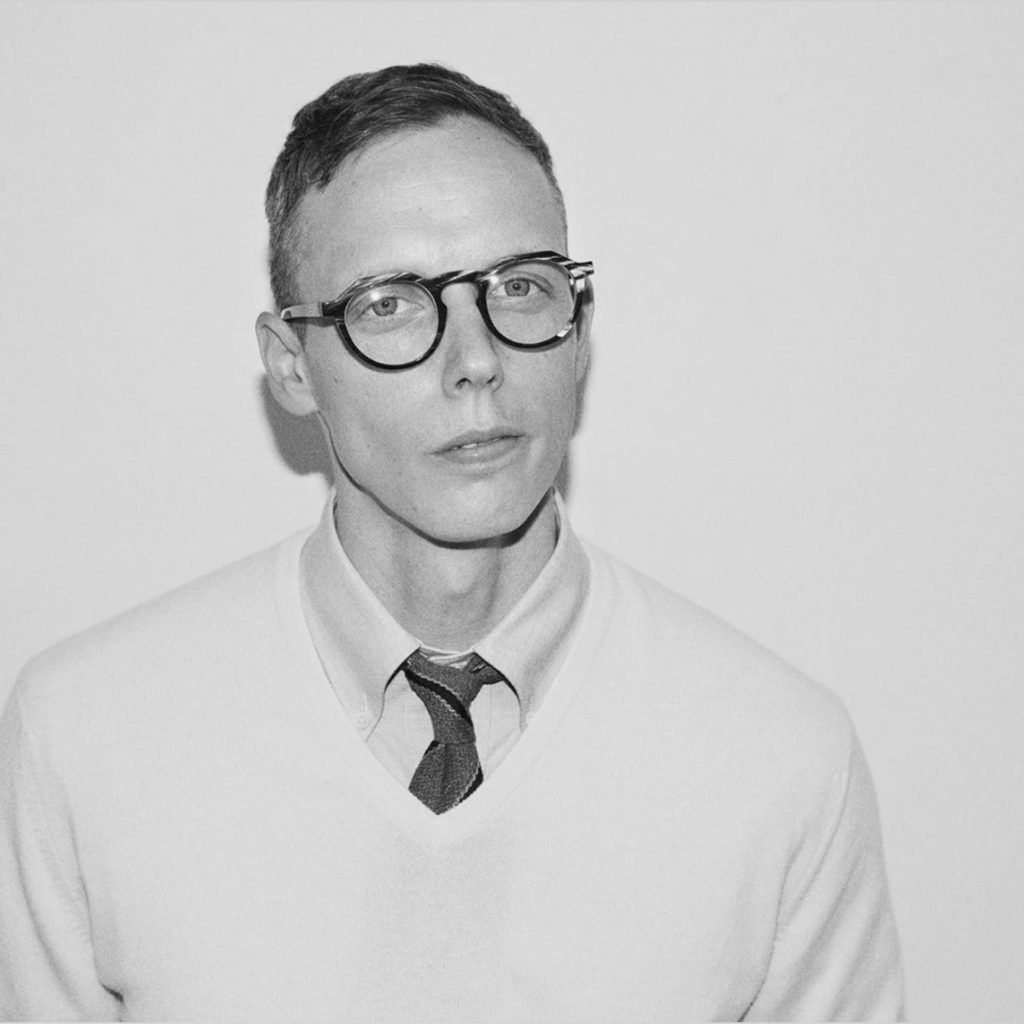Jennifer Gould Textile Figure Artist - USA
Tell us how your time in Japan studying weaving in a kimono factory influenced your artwork?
It was a goal of mine to go there as a student, which I did in (1971-1972). I came away from that year with an appreciation of pattern-on-pattern design, especially in combining fabric. This is evident in kimono and obi wearing: both pieces are usually patterned and the combination of colours and woven or painted images can be extremely graphic or highly subtle. I was fascinated! I studied kasuri (ikat) weaving at the Yuukistumugi kimono weaving factory This factory is extremely famous for their unique and complex warp and weft patterns, indigo dye vats, I knew how to weave, but this was a world of centuries old techniques that were completely new to me. It opened up a world possibilities from which I am still exploring and benefiting every day.
What made you move from hand spinning and weaving to making dolls?
I realized that hand spinning as a career was not right for me. I visited my hand spinning teacher who ran a shop selling Shaker reproduction furniture as well as Shaker inspired doll clothing that fits a Barbie doll. I took some cat dolls that I’d made, seeing those dolls, she asked me to design an all-fabric doll; so began my career in designing dolls!
Can you explain how you get such charming faces on all your dolls?
 I’ve worked really hard at achieving a face that I find lovely and serene while contemplative or even dreamy. I have a hard time getting away from that pretty face. I developed a flat needle-sculpted face on which, I think; those are more expressive and quirky. Like anything, practice is what makes it happen.
I’ve worked really hard at achieving a face that I find lovely and serene while contemplative or even dreamy. I have a hard time getting away from that pretty face. I developed a flat needle-sculpted face on which, I think; those are more expressive and quirky. Like anything, practice is what makes it happen.
You are a member of many organizations in the textile world. Can you explain the value this has had on your work?
I really value the textile organizations I belong to, most especially my local fibre arts guild and the Michigan League of Handweavers. My local fibre arts guild, especially, gifts me with so many close friends who I can do “textiles and fibre talk”. The Surface Design Association (state, national and international), FAN (Fibre Arts Network of Michigan), and the Handweavers Guild of America have also been very important in my textile journey.
Do you have a doll that you simply cannot sell? If so, why?
No, I really make all of my dolls to sell.
You have been written up in “500 Handmade Dolls.” Can you tell about this experience?
A photographer friend mentioned that Lark Books was looking for entries. I sent images of my favourites, that I thought were the most inventive and inspiration. They were a triptych entitled, “Self-Portraits: 7 th , 8 th , 9 th Grades.” If you keep producing and creating, your best work will happen—and then it will be ready at the right time to be published. (My art faculty advisor once said, “From quantity comes quality.” He was so right!)
You have sent your work to Australia twice. Explain how this has helped you?
I am assured that having a website for exposure is absolutely important since that’s how you found me! For my 2012 exhibit, Deborah Blakeley suggested using gum tree leaves in some of the dolls and that brought a whole new dimension of plant life (Eucalypts) to me.
You do classes. Why?
I love teaching; I’ve had students who arrived at a class swearing that they were scared and just didn’t think they could do “it,” they came out with THE most wonderful work! Encouraging students to experiment, play, and create is so gratifying, also passing on what I’ve learned about working with fabric. The money, of course, is nice, too.
Where do you get your inspiration?
My eyes are immediately drawn to the world of nature, texture of pattern that inspires me. I also love three-dimensional work and actually have a hard time keeping things flat.
My signature Zoneone Arts question: What are the most important design elements to you?
The initial elements are shape and size. The outline of the shape, for me, needs to be simple so that the patterning can be highly complex. I have developed a number of doll shapes that I consider my personal canvas and those shapes I repeat often. Early in my doll making career I made life size figures, I soon found them uncomfortable for me to work with. The size I use may seem small I have found it to be both intimate as well as a comfortable size for my hands. I’m a touchy feely person, so holding the piece while I’m working is very much a part of the final product. Within the shape and size, all the other design elements come into play: color, value, visual movement and texture, line and ultimately composition.
Website: www.jennifergoulddesigns.com
Jennifer Gould USA,
Interview by Deborah Blakeley, June 2012
Think a colleague or friend could benefit from this interview?
Knowledge is one of the biggest assets in any business. So why not forward this on to your friends and colleagues so they too can start taking advantage of the insightful information the artist has given?
Other artists you may be interested in:






